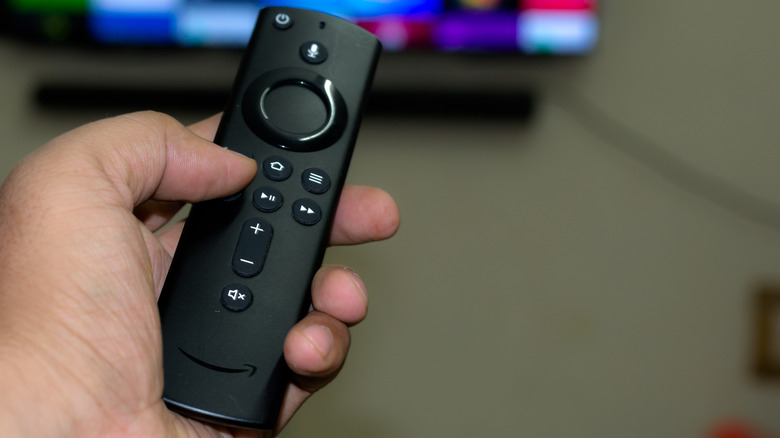Why You Should Be Using The Silk Browser On Your Amazon Fire TV Stick
Unlike many other streaming devices, Amazon's Fire TV platform offers something that seems like a no-brainer: a web browser. Multiple web browsers, in fact, because in addition to Amazon's own Silk browser, you can also install free Fire Stick apps, or if you're relatively tech-savvy, you can install any Android browser you like, though whether or not they'll work on Fire TV will vary.
While this flexibility is great and opens up new ways to watch media on the device (any site with full-screen videos is suddenly a new place to watch content), the reality is there's only one browser particularly worth using on Fire TV, and it's not even close.
Because Fire TV is usually running on lower-end hardware, such as a Fire TV Stick, any browser you install will struggle with running out of resources. But Amazon's proprietary Silk browser has two advantages that the others don't have, and they make all the difference. Since Silk is made by Amazon, they are meant to work together allowing for faster browsing and better performance.
Silk is built into FireOS and has excellent caching
Despite how simple they seem, web browsers require a lot of system resources. Web pages today aren't visually all that different from past years, but the technology behind them has changed significantly. Standards shift, the amount of media items on a page increases due to better bandwidth and higher system specs, and users constantly expect better performance. In today's age, no one wants a slow browser.
Because Silk is made by Amazon and included with its Android off-shoot, Fire OS, it's built with Fire TV hardware in mind. That means the hardware that allows them to sell Fire TV Sticks for under $50. Silk is optimized for use on those lower-powered devices as well as more powerful devices. Silk is made for Fire TV by the same company that makes Fire OS, so the two are built to work together.
The other advantage is due to the way Silk handles browsing. Instead of loading everything on your local device, portions of every site you visit are sent to Amazon's EC2 servers, where the site is pre-rendered and then quickly sent to your device via Amazon's enormous global network. Because much of the data is rendered by a high-power machine in the cloud, less work is needed from your Fire TV. The two working in concert means better performance and faster browsing, something other browsers on Fire TV can't replicate.

